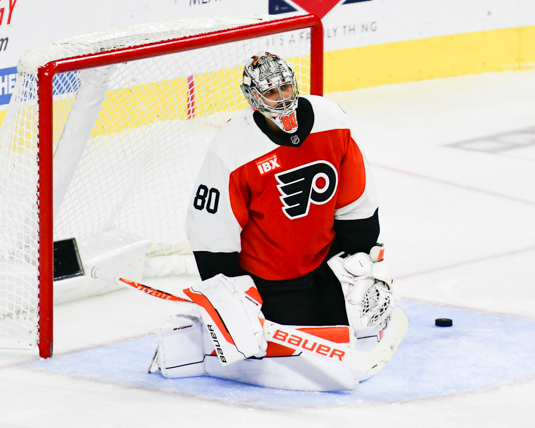Where Rules and Risk Collide
Few things in hockey are as thrilling, or as frustrating for bettors, as overtime. That extra five minutes, followed by the chaos of a shootout, can turn a sure win into a heartbreak in seconds. It’s fast, unpredictable, and filled with momentum swings that no stat model can fully capture. For casual fans, it’s entertainment. For bettors, it’s a gray zone where rules, odds, and luck blend into one slippery mess.

Dan Vladar #80 of the Philadelphia Flyers is scored upon by Jake McCabe #22 of the Toronto Maple Leafs Photo Credit – Jack.Smart@prohockeynews.com
How We Got Here
The NHL introduced 3-on-3 overtime in 2015 to reduce shootouts and increase game-ending goals. It worked, mostly. Games are decided faster, but the unpredictability only grows. One bad line change, one bounce off the boards, and a ticket that looked golden turns sour. Then comes the shootout, where everything becomes individual. Skills, not systems. Psychology, not patterns.
For sportsbooks like Betway, this format created a new layer of complexity. Some bets, like “Moneyline including OT,” carry that risk by design. Others such as regulation-only wagers cut the extra time out entirely. Knowing the difference between the two can mean the line between profit and confusion.
The Devil in the Details
The biggest challenge in betting overtime lies in understanding what counts. Many bettors forget to check whether their wager includes overtime or not. In regulation bets, the game is settled after 60 minutes, even if it’s tied. In moneyline sportbet, the outcome includes overtime and shootouts. Puck line bets usually include both as well.
This detail becomes critical when margins are thin. Imagine a team leading late in the third period, your regulation bet is seconds away from cashing. A late equalizer sends the game to overtime, and suddenly the wager is lost. Same play, same scoreline, different result. It’s that kind of fine print that keeps even seasoned bettors humble.
Numbers Can’t See Everything
Overtime doesn’t follow normal hockey logic. The space on the ice changes, lines shorten, and possession suddenly matters more than physicality. Traditional analytics, expected goals, shot share, faceoff percentage, lose predictive power. Bettors relying on models built for 5-on-5 hockey often find themselves guessing.
Shootouts are even stranger. They’re pure variance. Goalie tendencies, player confidence, and luck collide in ways that are nearly impossible to forecast. Some teams thrive in them, others treat them like penalty lotteries. It’s no surprise many sharp bettors avoid wagering on shootout-heavy outcomes altogether.
Smart Strategies for the Gray Zone
If you’re set on tackling overtime markets, there are ways to handle the chaos. First, always know the rule of your wager, “regulation only” versus “including OT.” Second, study how teams perform in tight finishes. Some clubs think those with quick-skating, creative forwards are built for 3-on-3. Others rely on defensive structure and struggle when space opens up.
Third, consider live betting. Watching momentum unfold in real time offers a better read on fatigue, line changes, and possession. The odds adjust quickly, but they also reflect emotion, which means opportunity for the calm and patient bettor.
The Beauty in the Uncertainty
Overtime and shootouts represent hockey at its most human, unpredictable, emotional, sometimes unfair. And that’s exactly why they fascinate bettors. You can study numbers all day, but when the game stretches beyond regulation, everything turns instinctive.
It’s not a flaw in the system; it’s the nature of the sport. In the gray zone of extra time, luck and logic share the same ice. That’s the thrill, the risk, and the lesson all at once: in hockey, even the best bet still needs a little bounce.


You must be logged in to post a comment.